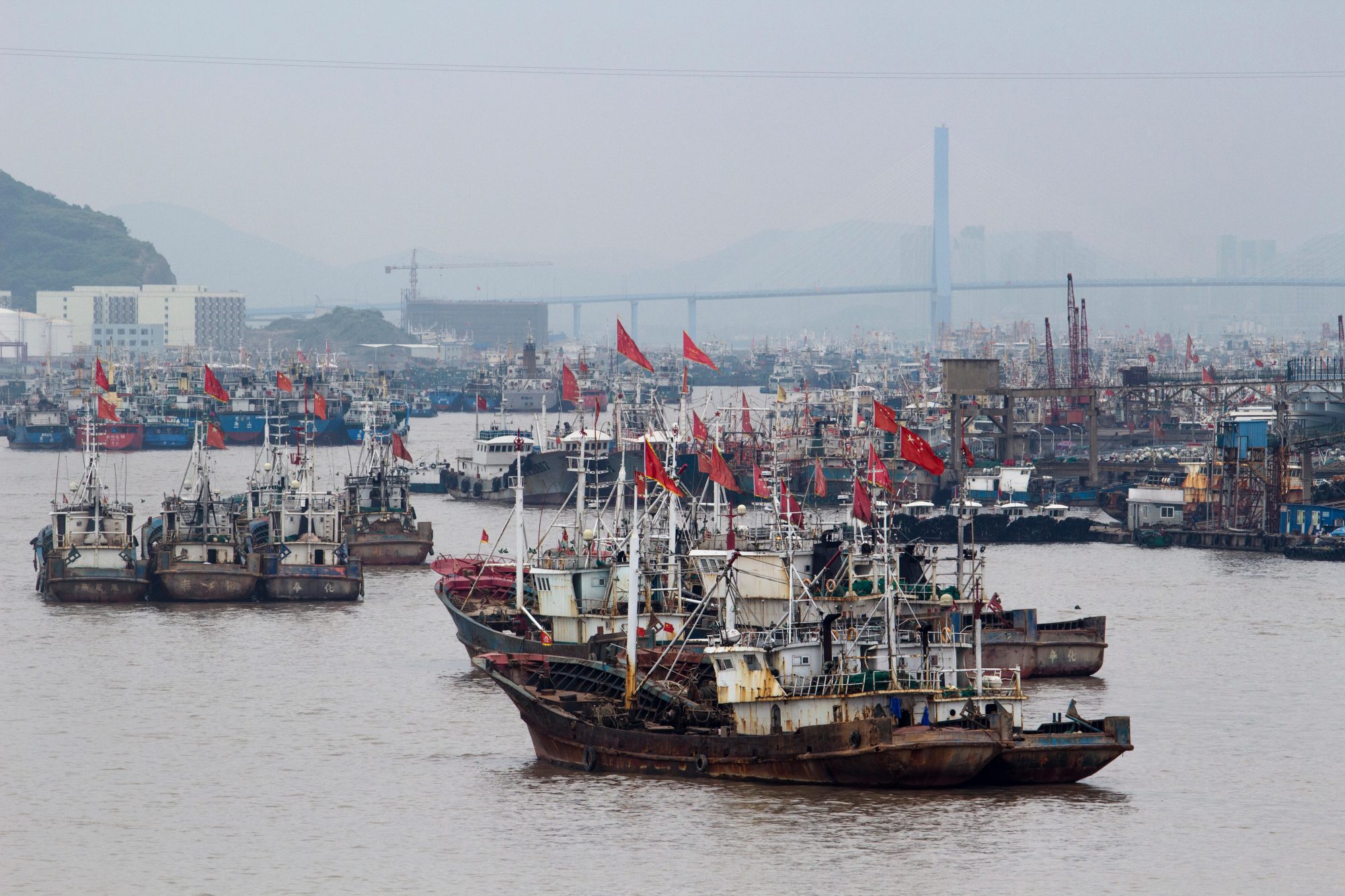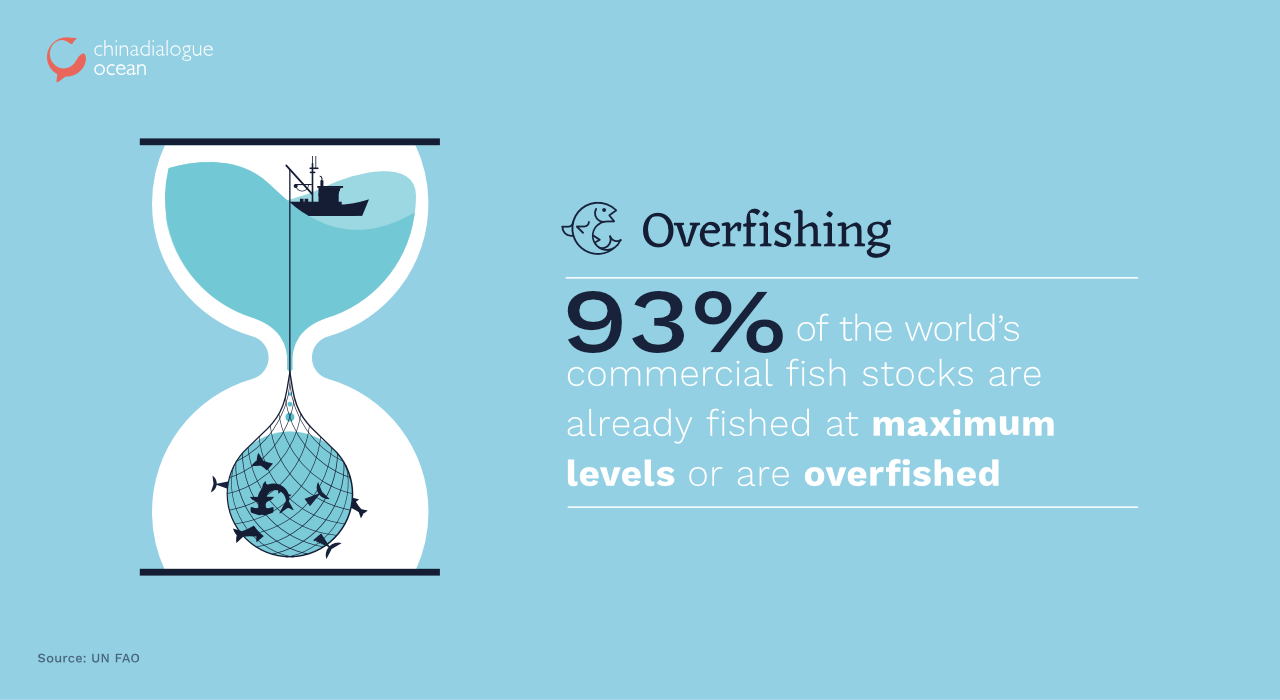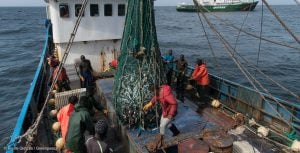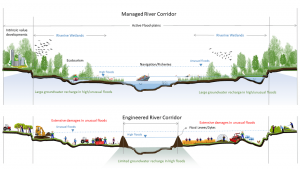As the World Trade Organisation confronts a deadline this year to reach an agreement to eliminate subsidies that are decimating global fish populations, perhaps no nation faces higher stakes than China.
China operates the planet’s largest fishing fleet, catches the most seafood and hands out the most money in fuel subsidies and other support that enables industrial trawlers to travel to the furthest reaches of the ocean. As a result of the expansion of global fishing fleets to meet rising demand, 33% of fish populations are being harvested at biologically unsustainable levels while 90% are fully exploited, according to the United Nations Food and Agriculture Organisation (FAO).
Researchers in 2016 pegged total annual fishing subsidies at US$35 billion (in 2009 dollars). They categorised US$20 billion of those incentives as harmful with as much as 85% of that money going to industrial fishing operations. A 2018 study found that in the absence of US$4.2 billion in subsidies, more than half of high seas fishing would be unprofitable. Furthermore, China, Taiwan, Japan, South Korea, Indonesia and Spain account for 80% of fishing outside territorial waters. Researchers estimate that China alone was responsible for 21% of high seas fishing in 2014 and nearly 19% of global fish catch averaged between 2014 and 2016.
In 2001, the WTO formally recognised the need to reform fishing subsidies and member nations four years later called for the abolition of incentives that contribute to overfishing. Negotiations languished for a decade but took on new urgency in 2015 after the UN adopted a set of 17 Sustainable Development Goals (SDG). Among them was SDG 14.6, which calls for the prohibition by 2020 of subsidies that contribute to overcapacity, overfishing and illegal, unreported and unregulated (IUU) fishing. Still, WTO’s last biennial meeting in December 2017 ended without an agreement on fishing subsidies. However, the 164 WTO member states, which must approve decisions by consensus, did agree to redouble efforts to reach an agreement by the end of 2019.
This year, negotiators have been meeting monthly at WTO headquarters in Geneva to try to break the stalemate. An agreement to ban fishing subsidies would have a profound impact on ocean health and national economies. Unlike other international agreements, such as the Paris accord on climate change, WTO actions are binding and carry the weight of law.
“The WTO is a body that really has teeth behind it, which makes negotiations hard and complicated,” said Isabel Jarrett, manager of the Pew Charitable Trusts program to reduce harmful fishing subsidies.
China has so far kept a low profile in the talks, according to observers, and has not publicly revealed its negotiating position. Yet a new proposal from China to cap fisheries subsidies, and a review of the country’s shifting policies, government reports and interviews with close followers of its fishing practices offers insights into how it might respond to a WTO agreement on subsidies and the impact on its fisheries.
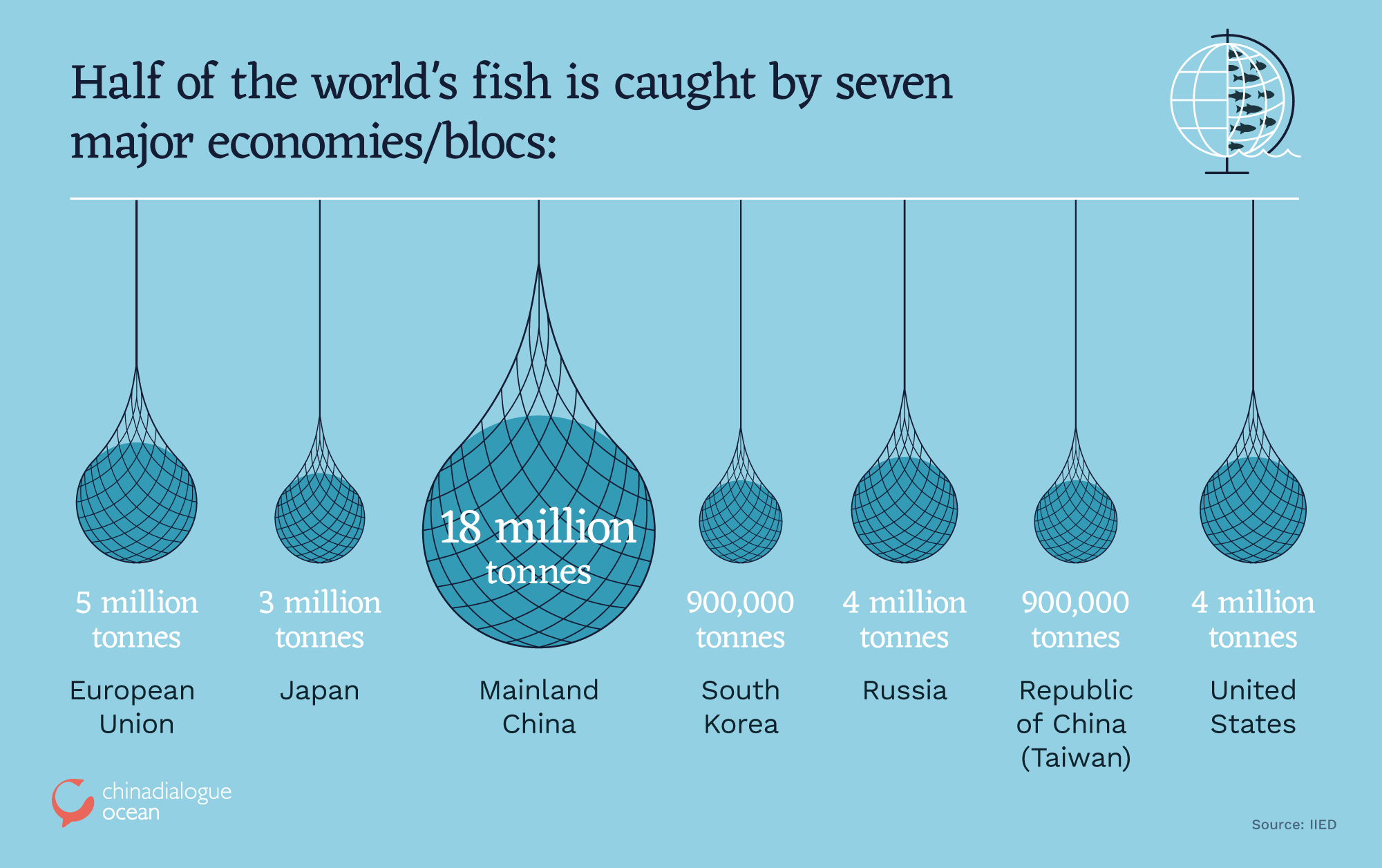
“China is a leader in many ways on certain environmental issues and they have expressed their willingness to be part of other global environmental efforts, such as the Convention on Biological Diversity,” said Jarrett. “There’s a domestic policy in China to reduce fuel subsidies for domestic fishing and it’s important for China to take forward some of these commitments they have made domestically to the international stage.”
The making of a fishing superpower
From a few trawlers dispatched to fish off the coast of Africa in 1985, China’s overseas fleet has grown to 3,000 vessels (more than 2,400 of which were at sea in the first half of 2017, according to a United States government analysis). A report issued by China’s Ministry of Agriculture and Rural Affairs in July 2016 noted that the country’s fishing fleet operated in the territorial waters of 40 countries as well as on the high seas in the Atlantic, Indian, Pacific and Southern oceans.
“More than 100 overseas representative offices and joint ventures were established, more than 30 overseas bases were built, and a number of processing logistics bases and trading markets were established in China,” stated the report celebrating the success of the 12th Five Year Plan (2011-2015) for its offshore fisheries.
Billions of dollars in subsidies fuelled that expansion. Tabitha Grace Mallory, an affiliate professor at the University of Washington who specialises in China fishing policy, calculated in a paper that the country spent 40.4 billion yuan (US$6.5 billion) on subsidies in 2013. About 94% of those subsidies were for fuel, according to her study based on Chinese government reports and other Chinese sources.
Mallory is currently updating those numbers and has preliminarily estimated that fuel subsidies in 2016 fell to just under 8 billion yuan (US$1.2 billion). “That’s a huge decrease, which looks great,” said Mallory, who also serves as chief executive of the China Ocean Institute, a Seattle-based consultancy. “My suspicion, which is confirmed by conversations with experts in China, is that they’re definitely rolling back subsidies for the domestic fleet but a lot of subsidies will remain in place for the distant-water fleet.”
In response to a collapse of fish stocks in its territorial waters, China has imposed restrictions on its domestic fishing fleet, cracked down on illegal fishing and boosted aquaculture production. China’s State Ocean Administration reported that in the first nine months of 2017, captures of wild fish in domestic waters declined 11.9% over the previous year while captures outside the country grew 14.2%. China’s total wild fish captures declined 7.7% in 2017.
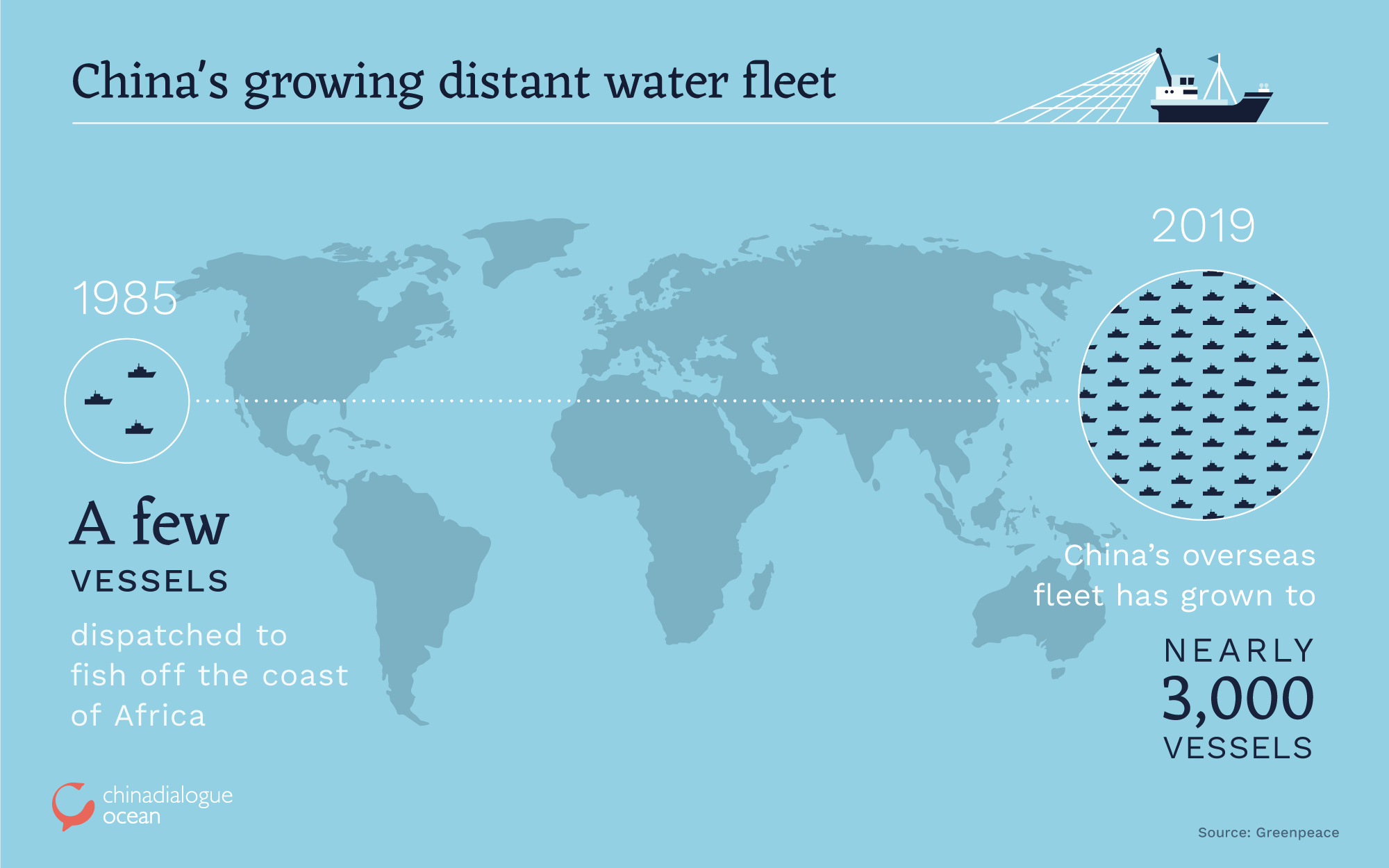
Mallory says that statistics on China’s fishing industry are increasingly hard to obtain. “Since my 2016 paper, there’s been a huge decline in transparency in reporting on subsidies,” she said, noting China is far from alone in its secrecy about subsidies. “Maybe the increased scrutiny has caused them to pull back or maybe in the lead up to the WTO negotiations, there’s some hesitancy while they figure out what they’re doing.”
Adding to the confusion, Mallory says, is that China has combined data on subsidies that are beneficial – such as those that finance the decommissioning of boats to reduce fishing capacity – with those that are destructive, like payments for the renovation or construction of vessels. She said data from 2018 she has obtained shows that 59% of those subsidies are going to China’s distant-water fishing fleet. “The data indicates that there is still a lot of support for distant-water fishing but it conflates disposal of vessels with construction,” Mallory said.
Shifting policies
What is clear is that China has signalled a change in fishing policy over the past few years. The country has pledged to reduce fuel subsidies for domestic fishing by 40% and cap its overseas fleet at 3,000 vessels by 2020. It has also joined other nations in agreeing to ban the capture of krill in “ecologically vulnerable” waters off Antarctica (though China and Russia have blocked the expansion of marine reserves in the region).
And absent in China’s latest Five Year Plan (2016-2020) is the triumphal tone of the previous plan.
“Major changes are taking place in the management of international marine fisheries,” the Ministry of Agriculture said in an August 2017 statement about the 13th Five Year Plan for National Ocean Fishery Development. “The traditional development model of offshore fisheries needs to be changed. The further development of offshore fisheries faces a series of severe challenges. The ‘Thirteenth Five-Year Plan’ is a key transition period for China’s transition from a large offshore fishing country to a strong offshore fishing industry.”
In its 2018 “State of World Fisheries and Aquaculture” report, the FAO noted that: “If the plan and additional reforms are fully implemented and the goals are achieved, it is expected that the growth rate of China’s aquaculture production will slow and its capture fisheries production will be substantially reduced.”

One possible fishing subsidies agreement
Unknown at the moment is what a comprehensive WTO accord would look like. China presented a proposal at the organisation’s June meeting that would cap subsidies and reduce them over time.
“With the deadline approaching, key issues in the negotiations remain unresolved,” the proposal states. “Members’ positions regarding subsidies that may contribute to overcapacity and overfishing are still far apart. Compared with other approaches, a cap-based approach could be a relatively practical way forward, because it accommodates constraints as well as flexibilities of the [regulations], and strikes a balance between the need for sustainable fisheries and the need for policy space for sustainable social and economic development.”
Under China’s plan, member states could choose one of three caps:
- “A subsidy cap equals [sic] to X% of the amount of the average base for capping provided by a Member during the base period; or
- A subsidy cap equals to Y% of the average landed value of a Member’s total wild marine capture during the base period; or
- A subsidy cap equals to Z% of the amount of global average base for capping per fisherman multiplied by the number of fishermen of a Member during the base period.”
The caps would not apply to subsidies that promote sustainable fisheries. And least developed countries would be exempt from the caps and reduction commitments.
The other main proposal on the table is one released in March by Australia and the US that would divide member nations into three categories and impose caps on fishing subsidies that would be reduced over time.
The 28 countries that account for either 0.7% or more of global wild fish capture or 0.7% of global seafood exports would be classified as “Tier 1” nations. They would negotiate among themselves to establish individual national caps as well as a timetable for reducing those subsidies. Tier 2 nations – the 51 countries with more than 0.05% of the global market but less than 0.7% – could also negotiate caps or accept a default annual subsidy cap of US$5 million. Finally, the 57 Tier 3 countries with less than 0.05% of market share would not be subject to caps.
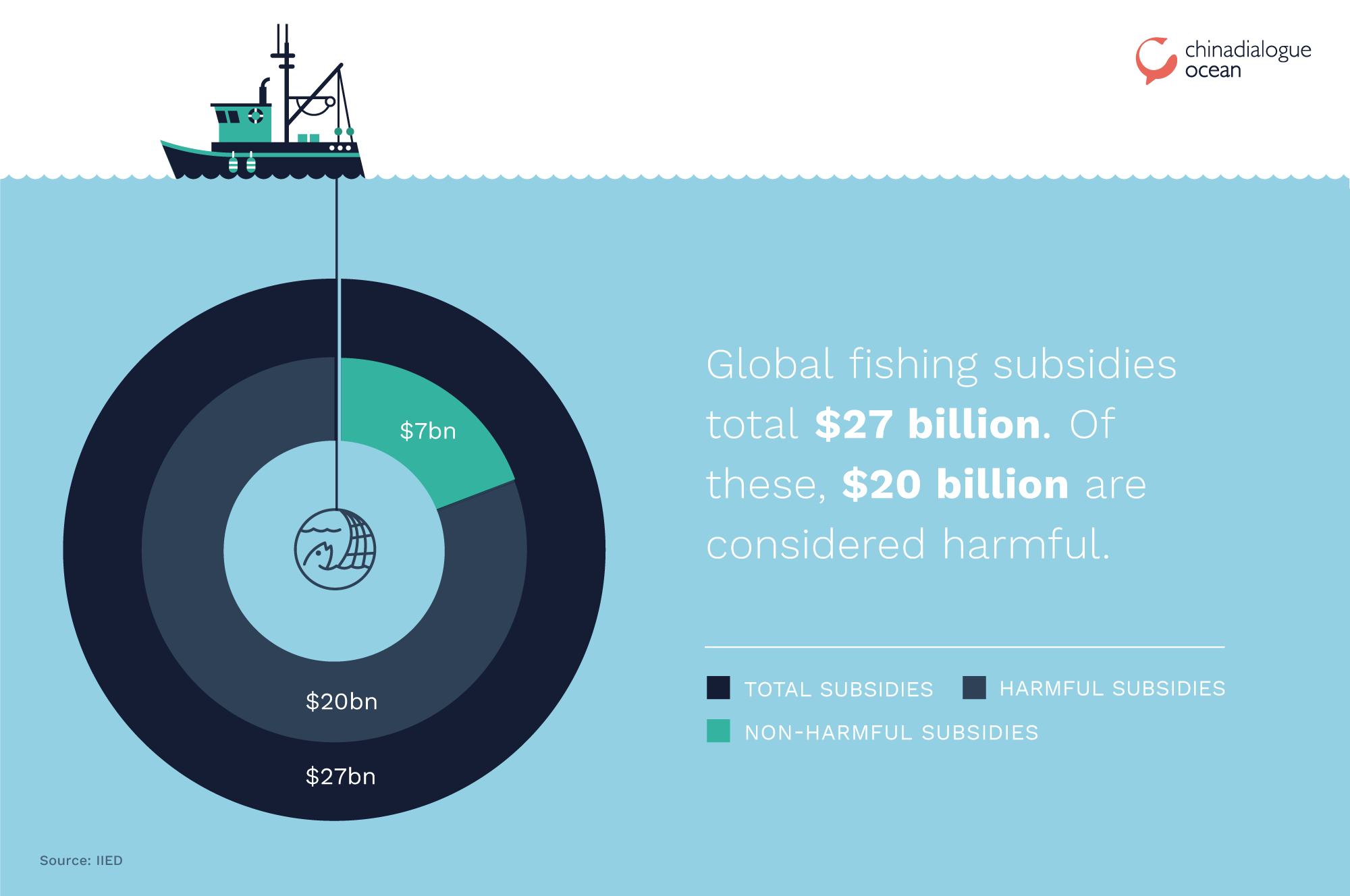
Under the proposal, nations would have to report up-to-date information on subsidies and provide notification of any changes. The plan’s timetable is tight. Countries would disclose their subsidies now and over the next few months, Tier 1 and 2 nations would negotiate to establish caps and subsidy reduction commitments with a final deal to be in place by year’s end.
“It has certainly got discussions going,” said Pew’s Jarrett of the Australia-US proposal. “It’s not necessarily going to be a silver bullet, but it’s advancing negotiations. That level of policy reform can’t happen overnight. I don’t think anybody thinks that come Jan. 1, 2020, that you flip a switch and all subsidies are removed.”
China has not taken a public position on the Australia-US proposal and officials at the Ministry of Agriculture and Rural Affairs could not be reached for comment. However, in a May 2019 paper filed with the WTO, China signalled its support for reaching an agreement on fishing subsides. “Swift conclusion of the negotiations is important,” the paper states. “The agreement to be reached should provide comprehensive and effective [regulations] to prohibit certain forms of fisheries subsidies contributing to overcapacity and overfishing and to eliminate subsidies contributing to illegal, unreported and unregulated (IUU) fishing.”
Given that fuel subsidies underwrite the operation of distant-water fishing, any cap potentially would hit China the hardest.
But perhaps the biggest question, and one particularly pertinent to China, is whether countries would be able to sidestep any subsidy agreement by disguising ownership of overseas fishing operations.
Evasive action
A current WTO working document on fishing subsidies proposes that a subsidy would be attributable to the nation that grants it regardless of the flag a vessel flies. That, of course, relies on member states accurately reporting subsidies and vessel ownership to the WTO.
For instance, in 2018, the Environmental Justice Foundation, a London-based nonprofit, released the results of an investigation into China’s influence in the African fishing industry. Titled “China’s Hidden Fleet in West Africa,” the report found that 90% of Ghana’s industrial trawlers have ties to Chinese ownership.
Mallory notes that China has expanded its overseas fishing operations by financing foreign fleets and striking joint venture agreements with other countries and corporations to build seafood processing plants. And China has extensive fishing operations and financial interests in countries with little capacity to supervise compliance with national and international law.
“Is that a way they’re getting around the subsidy issue?” she asked. “By basing processing facilities overseas, you’re giving support to the industry. A Chinese company is proposing to build a processing centre in Uruguay. Will that be counted on the books as Uruguay’s support for the industry or China’s?”
Another issue: If China decommissions industrial trawlers, will those boats be sold to other countries and put back in service?
Said Jarrett: “Of course there is a concern, as there always is in international fishing governance, about vessels being flagged under different countries. That’s being discussed. But we have to recognise that the WTO is not a fishing management organisation. The important thing for the WTO is to ensure that they create effective [regulations] for subsidies, which is obviously in their purview. You want to ensure there aren’t significant loopholes.”
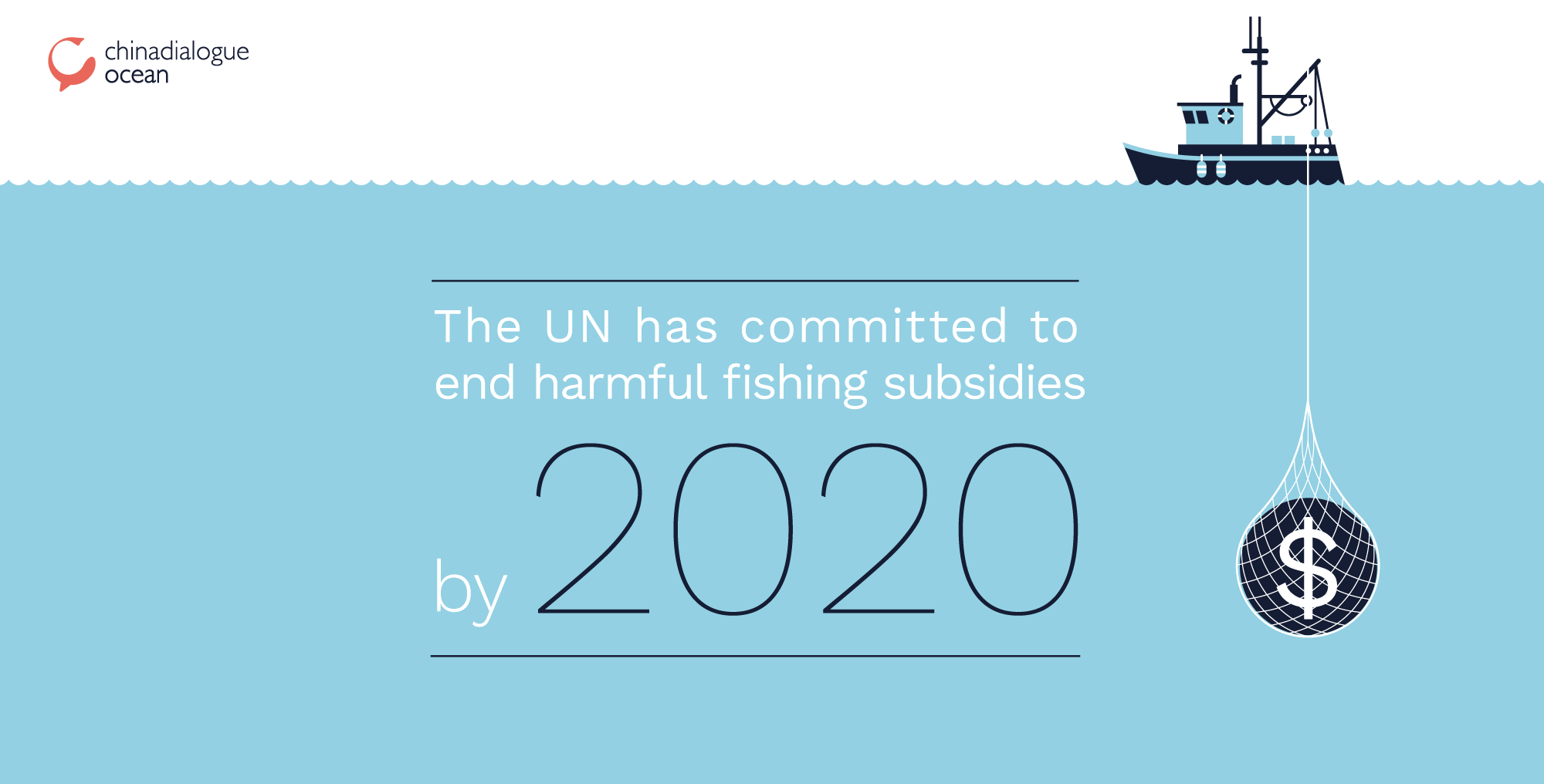
What’s next at the WTO
Despite nearly 20 years of failure to reach a fishing subsidies agreement, the WTO faces mounting pressure internally and externally to meet the 2019 deadline and prove it’s an effective multilateral organisation, especially since it has postponed its next biennial meeting until 2020.
“Let’s be honest, the politics of the WTO are extremely difficult at the moment with the trade war that has been triggered by the Trump administration,” said Rémi Parmentier, director of Madrid-based consultancy the Varda Group and a longtime observer of the WTO. “In everybody’s head, the reform of the WTO is at the top of the agenda at the next ministerial meeting.”
“We know we all have other fish to fry, so it’s even more important that an agreement on fishing subsidies is reached by the end of the year,” he added.
Peter Thomson, the UN secretary-general’s special envoy for the ocean, has been increasingly vocal on the issue. “The ball is in the WTO’s court,” he wrote in a January commentary. “We have entered the year in which the bulk of the game must be played. Thus, 2019 is effectively the year in which we will win or lose our long struggle to rid global fisheries of harmful subsidies.”
The WTO Secretariat itself and the chair of the WTO negotiating group for fishing subsidies, Roberto Zapata Barradas of Mexico, have also been weighing in. Zapata Barradas was not available for an interview but in a December 2018 statement issued by the WTO, he said: “We all know the mandate is to reach an agreement by the end of 2019 and we all know getting there is not easy. If we are serious about getting this done, we have to move into the uncomfortable zone of compromise and accommodation.”
Observers expect China to make its stance clearer once negotiations begin at the delegate level later in the year. Parmentier believes China is motivated to reach an agreement on subsidies, noting that the country is hosting a high-profile meeting of the UN Convention on Biological Diversity in 2020 and wants to be seen as a global leader on sustainability.
“It’s really important to note that the Chinese policies in the last couple of years on illegal fishing have been really good and they have removed subsidies for violators,” said Mallory. “It’s an important step that they have acknowledged a problem but the problem is still ongoing.”
“It’s a big change from a few years ago when I had a conversation with the head of the fisheries bureau at a conference and he said, ‘Oh no, Chinese fleets don’t engage in illegal fishing,’” she added. “One silver lining of the Xi administration is that he does prioritise environmental issues and it does extend to the fishing industry somewhat.”
